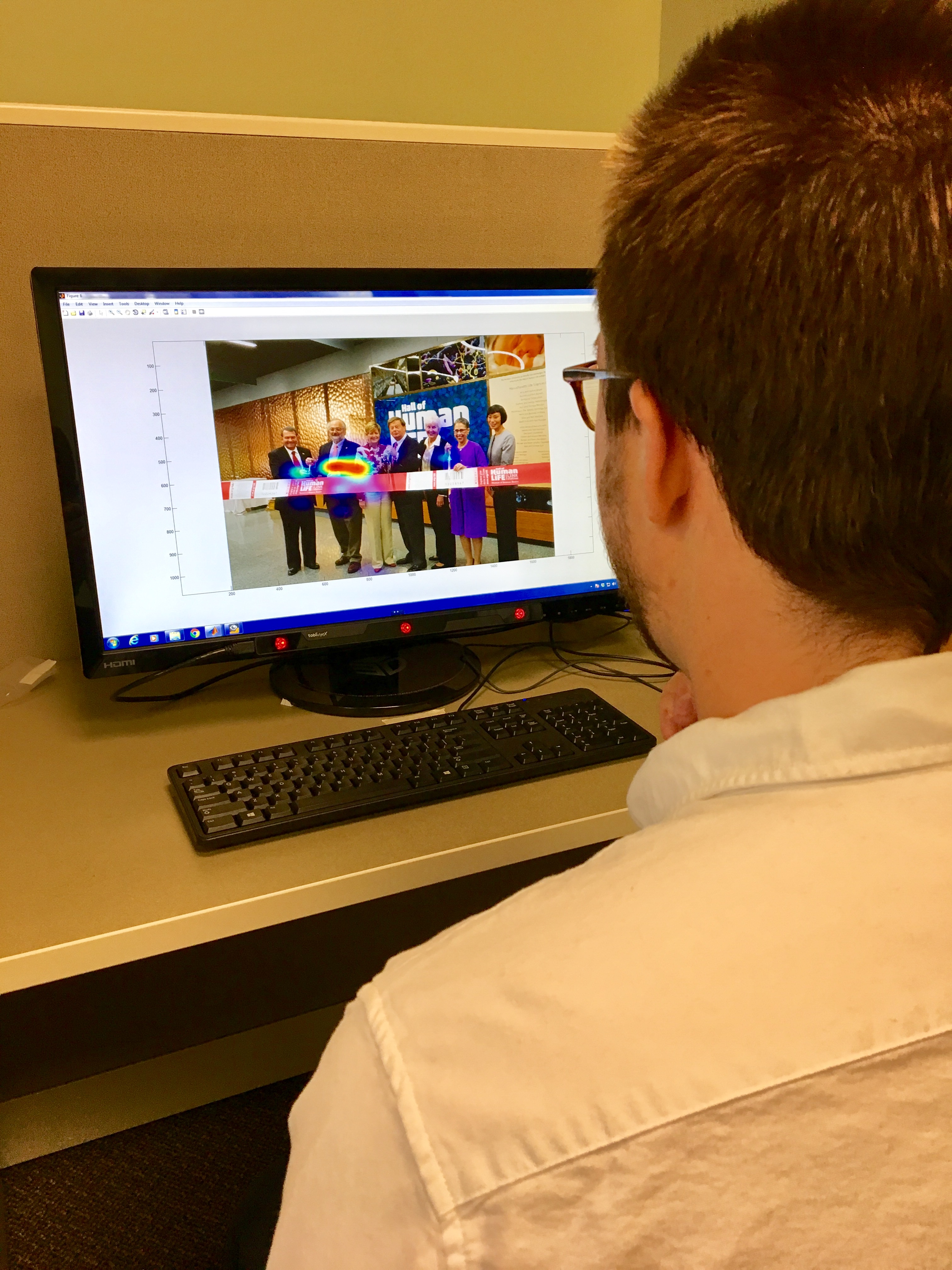By Sage Wesenberg, Biochemistry and Journalism 2019
Humans move their eyes every 300 milliseconds in order to be able to focus on what they intend to look at. Eye movement software can pinpoint each individual movement that comes together to show researchers a lot about the connections between eye movements and the brain.
Dylan Rose, a graduate student in Psychology Professor Peter Bex’s lab, is studying eye movement biometrics, connecting eye movement behavior and visual attention to both ophthalmological and neurobiological problems. Bex’s Translational Vison Lab will be teaming up with the Museum of Science’s Living Laboratory, a research program at the museum that brings visitors and scientists together to learn about science while conducting research. Rose will be presenting eye movement demonstrations to visitors and incorporating volunteers into a series of eye tracking tests to collect up to 3,000 data points per person. He will then analyze those points in aggregate with hopefully 150 other volunteers’ eye movements.
Your brain has a preference in where it will move your eyes based on what you are trying to do and how complicated the task is. “We can look at how quickly and frequently someone moves their eyes, but we can also think of each eye movement as a decision,” Rose explained. “For some reason they choose to look away or focus elsewhere, and that choice is being made three to four times each second.
Rose’s experiment at the museum will consist of volunteers looking at a variety of basic images like a Boston street. Before seeing each image, volunteers will be instructed to prepare for a task afterwards, like type a description of the photo or count the number of objects in the scene. Eye movement data will be collected for each image, aligning what parts of the image are attractive to the brain and how much the eye focused on that part. These many data points will be put into a computer model that will try to predict what task the volunteers were asked to do, based on where their eye movements went.
The potential future applications for this research could have a huge impact on the ability to easily diagnose retinal or neurobiological malfunctions. Bex hopes to be able to develop technology that could be put in a doctor’s office where a child could watch a video clip and by tracking their eye movements could correlate the data to brain activity and any potential issues. If one child’s eye movements are different from hundreds of others watching the same clip, what does that mean?
Both Bex and Rose are very excited for this upcoming collaboration. The Living Laboratory program gives behavioral scientists an opportunity to engage with the public, educating people on things like the brain and the eye, while simultaneously collecting data that can have important impacts for many people.
“It will certainly also be a learning experience for us – to translate this research into something that all ages can understand,” Rose said.
“It’s great that we can inspire a love of learning science, showing it’s not always beakers and cells. It’s something you can touch, skills you learn and share. And by participating in the process of science and learning something about it, you’ll be able to see how your contribution will help,” Bex said.
Bex and Rose’s exhibit will appear soon in the Hall of Human Life on Sundays from 1 p.m. to 4 p.m.

